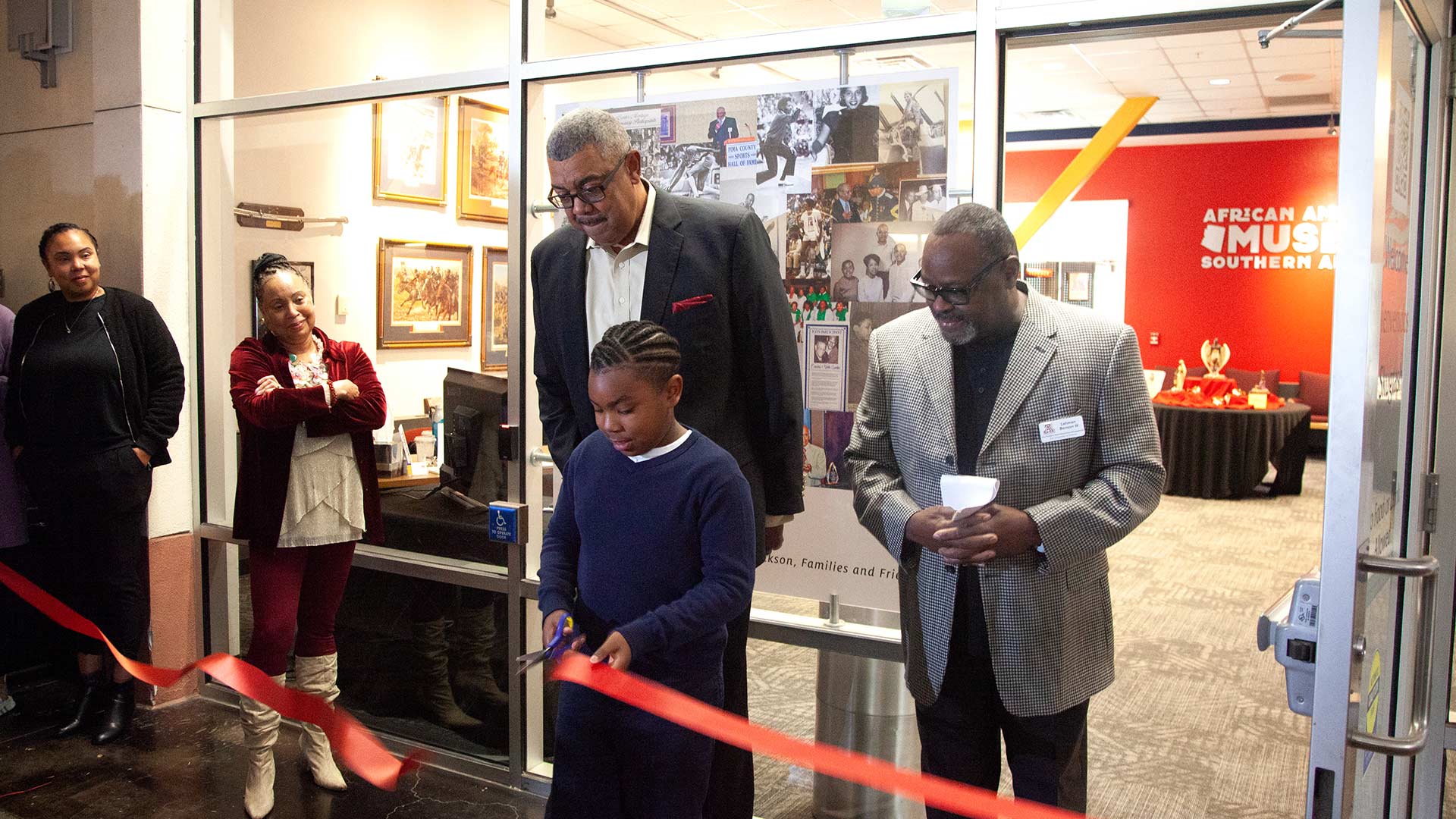 9-year-old Jody cuts the ribbon of the new African American Museum of Southern Arizona on Saturday, Jan. 14, 2023. Jody sparked the idea of creating the museum when he found out there was not a spot in Tucson that shares Black history.
9-year-old Jody cuts the ribbon of the new African American Museum of Southern Arizona on Saturday, Jan. 14, 2023. Jody sparked the idea of creating the museum when he found out there was not a spot in Tucson that shares Black history.
The Buzz for February 24, 2023

Southern Arizona can be a fairly diverse place, with some cities such as Tucson no longer being majority-white. But, the contributions that non-white residents have made to the area are often missing from historic accountancy, or at least lessened.
An organization that opened its doors in 2022 seeks to change that, at least for a group that makes up about four percent of the area's population. The African American Museum of Southern Arizona is currently housed in an 1,100 square foot space in the University of Arizona Student Union.
The idea for the museum came from a conversation with Executive Director Beverly Elliott's grandson, who was seven years old at the time. He asked if there was a museum dedicated to Black history in Arizona, similar to one Elliott served on the board of in Michigan.
"Do you mean that Black people didn't do anything in this state?" Elliott said her grandson asked. "I said, 'no, it just means that there's not a museum or one space where you can go and find out about Black people in Arizona or Southern Arizona here around Tucson."
That prompted her grandson to tell Elliott she should start one, which she and her husband Bob Elliott did. The museum is a mix of artifacts and oral histories representing the area.
Elliott said that as soon as she began asking people about their thoughts on creating the museum, she not only received positive feedback, but also offers to donate artifacts and to tell stories.
“Every person that I called over 75 was like ‘When do you want me there?’ We have a lady who’s 92 and I said ‘Do we need to come and get you?’ And she said ‘No baby, I’ll get a ride. I’ll find a way, I’m gonna get there if you’re gonna tape it. I’m gonna bring my stuff.”
Elliot is hopeful that the museum will be able to find a larger space, possibly being included in a discussed cultural center at the University of Arizona. One reason is the number of objects in its collection that she is not able to display currently.
"We have a couple of pieces of art. One is by Ruth McCrane, who was a famous African American artist out of the New Orleans and New York area. She painted primarily kind of like religious scenes, and we have a painting that's about four feet by three feet. It's an amazing piece of art. We also have a piece of art by a gentleman named Joe Bourne, who is a local artist who, once he heard about the museum, was so excited that he made a heart with the colors of our logo with a poem by Maya Angelou underneath this wax." While many of the stories told in the museum are of people who have died–such as Fred Snowden, the UA men's basketball coach who broke the color barrier for Division I college coaches–there are historical figures in the area who are still alive.
One such person is Connie Johnson, who recently was honored by the Sierra Vista Unified School District for her decades of work educating the children of Sierra Vista.
While attempts are being made to show the positive impacts of the history of Black Southern Arizonans, there is still a long history of mistreatment and racism in the area.
Attorney, poet, teacher and social activist Lola Rainey detailed the history of segregation in Tucson and how it affects the area's housing to this day.
She told The Buzz in 2019 about historic black neighborhoods in Tucson, including "A" Mountain (also called "Little Africa"), Meyer-Dunbar, Rillito-Marana and Sugar Hill, and how the history of those black residents has been erased and displaced as housing patterns have changed over time, and some parts of town have gentrified.
"You can see that there's a racial divide in housing. We know that our schools are some of the most segregated schools because of housing patterns," Rainey said. "Those are not accidental situations, they reflect policies and practices that continue to reify white supremacy and shift economic and political power from one group to another."
She said the practices of the past have created a wealth gap among different races today, and that there still is not enough being done to address discrimination, fair and affordable housing and opportunity for all people.


By submitting your comments, you hereby give AZPM the right to post your comments and potentially use them in any other form of media operated by this institution.